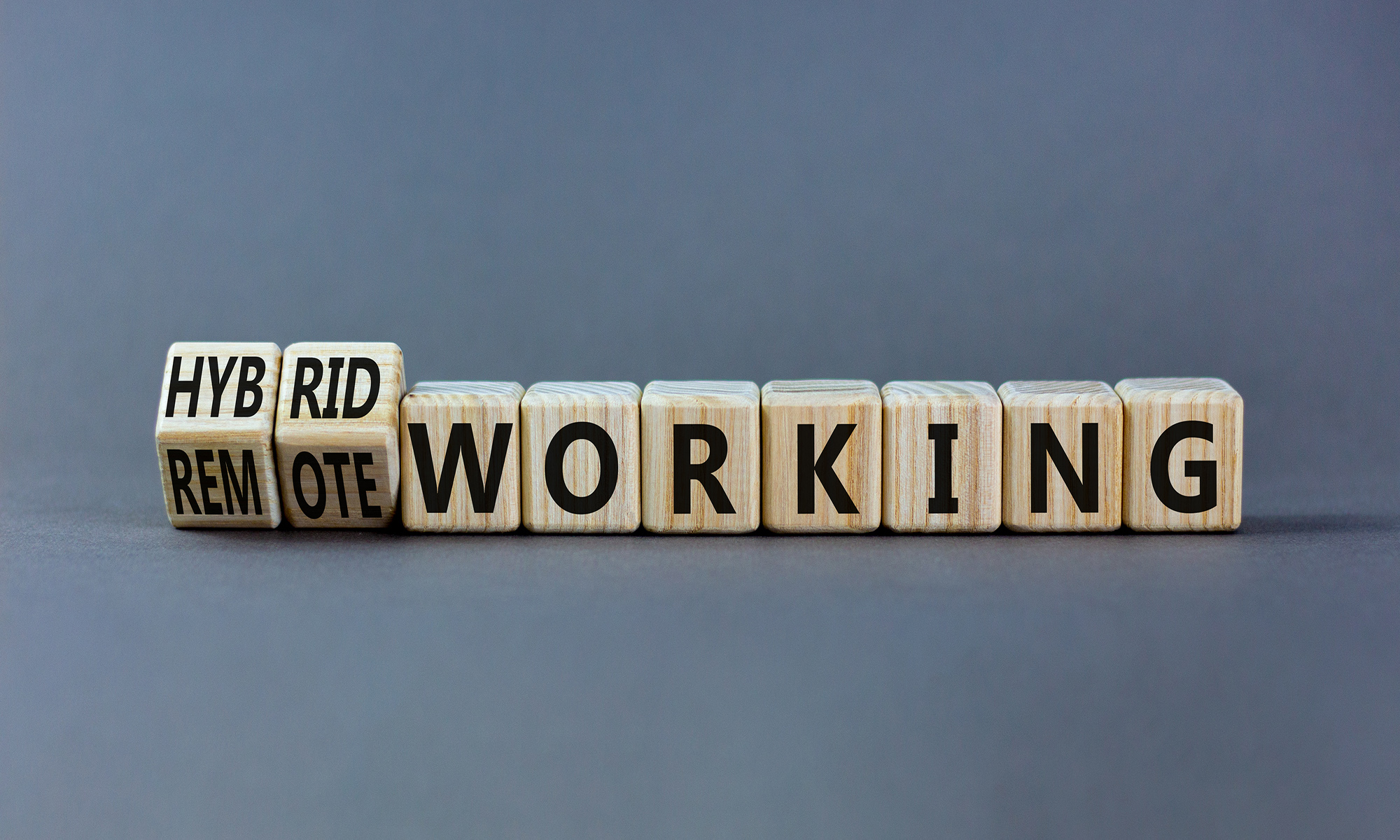November 18, 2021
Managing Supply-Chain Fallout
Diana Mota, editor in chief
Supply-chain disruptions have been making daily headlines for several months now. While the issues creating the disruptions may be out of your control, taking certain steps can help you manage the fallout plaguing your company and your customers, said Christopher Ng, managing partner at Gibbs Giden Locher Turner Senet & Wittbrodt LLP (Los Angeles).
In general, it is helpful to speak with the customers, distributors and manufacturers with which you have contracts to find workarounds to expedite solutions, Ng said. “Working together oftentimes is the best way to break the logjam.”
To help develop a well-thought-out strategy, Ng presented a five-point approach to understanding your rights and responsibilities and communicating with your customers at the November NACM STS Construction Credit Thought Leadership meeting.
Consult Counsel
Speaking with legal counsel that understands your industry and concerns can help find comprehensive solutions—not just legal answers, Ng pointed out. “In addition to the finance and the credit side, we try to have a holistic approach to some of these issues.”
If a situation is contentious and could end up in court, Ng cautioned against putting thoughts in writing such as emails or texts that are shared internally without including legal counsel. “It's not a bad idea to get legal counsel into the fold,” he said. “Theoretically, if a legal issue is pending, your communications are protected by attorney-client privilege. So, in certain cases, it does behoove you to bring your counsel in so that you can protect and privilege your communications and speak freely about problem solving and finding effective communication strategies with your customers.” Otherwise, in contested cases, internal communications could become evidence in a legal dispute, he said.
Review Your Contract
Consult your contract and make sure you understand the rights, duties and obligations between your company and your customer, Ng said.
- Do you have a most-favored customer status clause that gives you the ability to make an allocation preference amongst your customers?
- Do you have an enforceable output requirements contract that obligates you to fulfill the customer’s requirements?
- What are the notice provisions?
- What is your limitation of liability clauses or waivers of consequential damages?
- What is your ability to terminate or suspend your obligations?
- Do you have a price escalation or force majeure clause?
“If there is a price escalation clause, theoretically, in the event of a force majeure issue, shortage or unavailability then substitutions may be contractually permitted,” he said. “Delays in procuring those substitute materials may be forgiven and extend the contract time. So, this clause may be everything in a legal dispute.”
It is important to determine whether this current supply-chain chaos is a force majeure event, he added. “It probably is under most standard force majeure clauses, but not always. So, it's super important to understand all of the substantive provisions of your contracts that you are now trying to figure your way out of.”
Ng also explained the importance of the type of contract you use. A lot of subs and material suppliers do not have a formal contract form, he said. “Maybe all you do is exchange a [request for quotation], a quotation, a purchase order and an invoice, and those four documents are your ‘contract.’” When a formal contract is not used, there is always the potential for what is known as “the battle of the forms” between the seller and the buyer.
Review Governing Laws
If you do business on a purchase order invoice basis, “it's super important to understand how the UCC and battle of the forms sometimes shifts your rights, duties and obligations under the law,” Ng said.
State regulations vary by state so make sure you understand the laws in the state where you are operating and what is relevant to your company. For example, “Force Majeure, oftentimes, is not defined by the contract and may be defined by statute.” Ng outlined several sections of the Uniform Commercial Code that credit professionals should pay attention to:
- UCC 2-615—Excuse by Failure of Presupposed Conditions
- UCC 2-609— Right to Adequate Assurance of Performance
- UCC 2-207—Additional Terms in Acceptance or Confirmation (Battle of the Forms)
- UCC “Gap Fillers”—open price term, delivery in single lot or several lots, place for delivery, time for deliveries, notice of termination, open time for payment or running of credit
- UCC 1-304—Obligation of Good Faith
A lot of clients and a lot of businesses are using UCC 2-615 and UCC 2-609, Ng said. For international sales, he directed credit professionals to the United Nation’s International Sale of Goods rules.
Be Fair and Reasonable, and Give Proper Notice
Judges and juries oftentimes look for “who acted in good faith, who has been dealing fairly, who's been reasonable, and that in my mind is massively understated,” Ng said. “You have this duty of good faith and fair dealing, which is omni present in all contractual relationships.”
Even if it is a force majeure event that provides some forgiveness, “typically you have an obligation to take reasonable steps to mitigate the other party’s loss,” he said. “You may have the obligation to call up your customer and give them their notice of impact and give them a list of substitute materials or expected delays so that, if necessary, they can go out and secure product from somewhere else.”
Make sure you give timely notice that there's a force majeure issue, that there's a condition that may delay performance, he added. “It is a good legal and a good business practice that you have timely given proper notice or seasonable notice to your customers in the event of a supply-chain issue.”
If you would like to learn more about the Credit Construction Thought Leadership Group, please contact Education Director Tracey Lerminiaux at This email address is being protected from spambots. You need JavaScript enabled to view it..
Shortages Expected to Drag into the Holidays
Annacaroline Caruso, editorial associate
What happens when supply backlogs and the holiday season converge? “Massive supply-chain disruptions are leaving shelves empty in stores across the country and raising prices for what’s in stock,” reports KXLY.com. “It is a logistical headache that both small and big businesses warn will get worse during the busy holiday season.”
The supply chain is crippling under record-high levels of demand. “All of these companies that cannot get inventory for the holiday season, then seasonal goods come in once the season is over, what happens to them,” asked Phillip Poland, director of international trade compliance with DHL Express Americas Region (Erlanger, KY) during an FCIB webinar, The Current Headache of International Supply-Chain Issues. “Because at some point, this Christmas stuff is going to come in January or February.”
Delayed delivery is a problem for any product, like resin, aluminum or rubber. But some products are more time sensitive than others and will not sell as quickly once the holidays are over. Some contracts have a “deliver-by date,” which allow your customer to pay a discounted price or no payment at all if your goods are delivered past a certain timeframe.
“If certain items are not delivered by a certain time, then [customers] aren’t paying for it,” explained Jay Tenney, managing director of Trade Risk Group (Irving, TX). “But then your customer also has lost all those holiday sales, so it is going to be a problem.”
One business owner told NPR he will have to skip a Black Friday promotion, which normally boosts sales, due to supply delays. "[We’re] talking about over a million dollars’ worth of goods,” Bobby Djavaheri, company president of Yedi Houseware Appliances, told NPR. “And it's just a disaster."
The result will be tighter profit margins and business disruptions where traditionally, the holiday season is highly profitable. Companies will have no choice but to try and sell seasonal product at a discounted price once the holidays are over, said John Loy, managing director of Invre Capital, LLC (Chicago). “Margins are going to get hit hard.”
Companies are desperate to get any amount of product they can in quickly, so some are choosing to switch to air freight, Poland said. “You have this massive shrinking 70% reduction in available air freight and then overcapacity with ocean liners,” he added. “But the cost difference is massive. There is no way they have margins to cover that, but they just want to get the product in.”
However, switching means of transportation is unlikely to move product any faster. The supply chain is overwhelmed at every step, from warehouses to trucks, ports and railways. “Dockworkers are unloading ships as fast as they can, but the challenge is to move the containers out of the ports to make room for the next ship,” wrote Jonathan Gold, National Retail Federation (NRF) vice president for supply chain and customs policy, in a report published last week. “Retailers have enough inventory on hand to make sure shoppers won’t go home empty-handed this holiday season. But there are still items sitting on the docks or waiting on ships that need to make it to store shelves and online sellers’ warehouses.”
Poll Shows Sales and Credit Teams Working Together
Bryan Mason, editorial associate
Over the past year, nearly 58% of credit professionals expressed their relationship with the sales department has strengthened, according to a recent NACM eNews poll. Additionally, 36% of respondents said the relationship has stayed the same, while 6% said that it has weakened.
Managing pandemic-fueled disruptions helped bring the sales and credit departments closer together, said Betsy Rhodes, CCE, treasurer at Metal Specialties, Inc. (Odessa, TX). “We are a small company and got smaller through COVID and oil prices. I have had to work closely with our sales people to ensure we could sustain the pandemic. Each large sale was discussed. We would evaluate our customers together and decide if we would require partial [down] payments.”
Price escalations further developed the relationship. “With stainless, aluminum and steel prices going up, it became harder to decide on who we will sell to,” Rhodes said. Despite the potential rise in risks of nonpayment due to these price escalations, Rhodes attributes her close collaboration with the sales team for keeping invoices under 90 days.
A shift in company culture further supports the relationship between the credit and sales teams, she said. “Our company made the decision that everything works much better when there is more communication and partnership on sales. I am as much a part of sales as the sales team is, and they have become more involved in collections. We are now one team instead of two competing ones!”
Chapter 4 of NACM’s Business Credit Principles manual outlines the basis for the credit-sales partnership building off of the Three Cs of Credit: communication, cooperation and collaboration. Basing the standard for the credit and sales relationship on these three principles can increase the information available to both the credit and sales departments and result in increased sales with decreased risk.
Sales staff can be a valuable source of information for the credit department. They can share firsthand observations that cannot be captured in other credit information such as credit reports, credit references and financial statements. The credit department can provide training so sales team members understand the credit application or credit approval process.
Through collaboration, the credit department can offer alternatives for riskier customers such as guarantees, letters of credit, credit insurance or graduated terms. And without cooperation, each function serves as a silo—concerned only about its individual goals and objectives. Credit and sales should work together to maximize the company’s success and to minimize internal conflict.
5 Leadership Mistakes in Remote and Hybrid Work
Kaya Ismail
The explosion of remote work required millions of employees and senior leaders alike to make adjustments to the challenges of working from home. Meetings via video conference and having coworkers widely scattered rather than at the desk down the hall created new challenges for bosses and frontline workers alike.
Only 33% of company leaders managed a remote team prior to the pandemic, according to a 2020 report from Terminal, a San Francisco-based specialist in hiring remote engineering teams. For leaders especially, managing a team that isn't in the same location can be challenging, meaning that management styles that worked in the office don't work as well when teams aren't in one place anymore.
Now, with more companies poised to embrace hybrid work and the work-from-anywhere model, this challenge is going to become more complicated. Here are some common mistakes to avoid when embracing remote and hybrid work.
5 Remote Work Management Mistakes
The transition from office life to working from anywhere means that the work environment won't always be the same. As a result, there are some frequent mistakes that organizations can make:
Not Trusting Employees
For companies that were entirely in an office setting, many managers feared their employees weren't doing their job when they went home. The thought was they would spend their time watching TV as if it was a day off. Good managers trust employees to get the job done regardless of where they are.
"If you have hired good people and built good management structures to give them direction for what needs to be accomplished, then you need to trust that they will live up to those standards," said Amy Spurling, CEO and founder of Cambridge, Mass.-based Compt, an employee rewards specialist.
Not Having Set Hours
While remote and distributed work theoretically allows employees to get work done at any time, that shouldn't be an invitation for managers to reach out to them and expect them to respond at all hours. That holds true even if employees are in a different time zone.
Having set hours for messages and deadlines similar to standard office hours allows employees to respond in a way that works for them and gives managers a clear expectation of when they should hear back.
Failing to Make Time for Conversation
A casual conversation at the water cooler or when passing in the hallway was typical for employees in the office. In a remote company, employees have to schedule a Zoom meeting to see each other face to face. Personal relationships can suffer as a result.
"In the move to fully remote, there can be a tendency to have all meetings be about the work product," Spurling said. "That is a mistake. The team needs time to connect with each other in a casual way."
Virtual coffee meetings or informal video chats can provide an avenue for team leaders to speak with employees about their personal as well as professional lives.
"For leaders, this shows that they care and will allow them to adjust or change policies if there is a need to make changes," said Ben Pulver, senior director of business operations at Holmdel, N.J.-based software company, Banyan.
Not Having Clear Policies
A lack of policy can be harmful in a remote-first company. To avoid confusion and disengagement, leaders need to ensure that policies are well documented and readily available to employees.
"Companies that want to build remote teams must be excruciatingly deliberate in building hiring practices, creating an effective onboarding process, and fostering a cohesive culture," Pulver said.
Without clear policies and documentation about how the company works and what's expected in certain situations, employees won't know what to do, which can lead to confusion that negatively impacts the entire organization.
Trying to Micromanage Employees
While some in-office leadership styles and managerial tendencies can translate to the remote environment, one type that doesn't transition well is micromanaging.
"Micromanaging was one of the most common reactions by managers when businesses went remote because it can be helpful to some degree in a traditional office setting," said David Smith, CEO of London-based graphic design firm, Tenscope.
When it's done remotely, micromanaging can create a toxic environment that makes employees feel as if managers don't believe work is being done unless they are closely supervised. While some companies may have required employees to work with their cameras on or even tracked how long they were spending on specific apps, what ends up happening is employees become disgruntled.
"A better approach is to set clear objectives, goals and deadlines for employees, and create the space for them to accomplish them," Spurling said.
This article first appeared on Reworked.co, reprinted with permission.
-
APRIL
29
3pm ET -
Just a Little off the Top: Strategies for Reducing the Growing Cost of B2B Credit Card Acceptance
Speakers: Lowenstein Sandler Partner Andrew Behlmann and
Colleen Restel, Esq.
Duration: 60 minutes
-
Collections 101
Speaker: JoAnn Malz, CCE, ICCE, Director of Credit, Collections, and
Billing with The Imagine Group
Duration: 60 minutes -
MAY
7
11am ET
-
MAY
8
11am ET -
Author Chat: How to Lead When You’re Not in Charge
Author: Clay Scroggins
Duration: 90 minutes | Complimentary
-
A Grizzled Attorney Presents the Construction Law Battlefield Webinar
Speaker: Randall Lindley, Esq., Partner, Bell Nunnally
Duration: 60 minutes -
MAY
13
3pm ET







